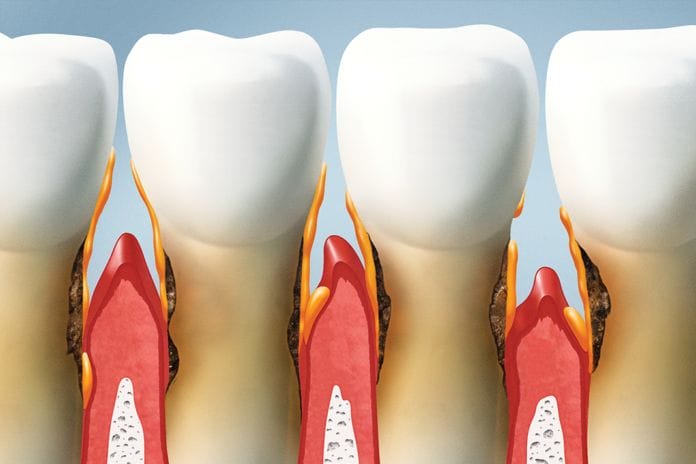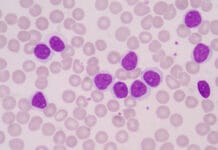As dental hygienists we’ve all been there, treating a new patient with a periodontal diagnosis. How do we turn an appointment around after we diagnose a new patient who has been seen by the same dentist regularly for years yet has never heard of periodontal disease? It’s an everyday struggle for a dental hygienist to gain control of the appointment, earn the trust of the patient and to convince them to schedule the needed periodontal treatment recommendations. Here we go, from start to finish, on how to maintain positive control of the appointment and to gain the trust of a new patient with a periodontal diagnosis.
First, we greet the patient in the lounge area with a smile and introduction, which is a great start.
Then the patient follows us to the “lion’s den” where we start off by reviewing medical history, dental history, and any chief complaints. The patient has no medical compromises, is a non-smoker, has no chief complaints and had been on a 6-month re-care appointment for the last 12 years. The patient has been seen in the same office every six months for the last 12 years, but the new patient’s dentist recently has retired.
Next, we take a full mouth series of 18 films.
Here is where we start to lose the new patient because the patient never before has had so many films taken and is uncomfortable. What to do? Assure the patient that we only take an FMX every 3-5 years, digital radiographs emit low radiation, and we will review the radiographs with the new patient. The new patient who is now amazed that the images are on a computer and came up “that fast.” Uh Oh, RED FLAG. The new patient’s previous dental office was antiquated. However, the new patient is impressed by the latest technology and is back on our side.
After radiographs, we start explaining how to read the radiographs based on density, and we point out tooth anatomy.
The patient is mesmerized, but now the hard part, bone loss. We explain bone height and show the patient the loss of bone as indicated on the radiographs. Then the dreadful periodontal disease diagnosis. The mesmerized look of the new patient now turns to the wrinkled nose and pursed lips. Not wanting to lose the patient at this point, we continue to discuss the periodontal disease process and treatment options. Here it comes: the new patient replies, “I have never heard of this and have been seen by my dentist for years, and they never said I have this disease.” We now realize that the new patient is not buying it. How do we gain the new patient’s trust, you ask? I start off by answering any questions the new patient may have. This usually entails going back to the radiographs and reviewing them again. Fortunately, the new digital imaging software comes with great tools to measure, to annotate and to compare. I use them all. I also avoid answering the question, “How come my dentist never told me this?” Instead, I move forward with “the now,” and I don’t dwell on “the past.” Although the new patient may be upset, I don’t want to throw anyone under the bus.
My next step is to chart restorations and periodontal chart.
The periodontal chart is also a great tool to use in unison with the radiographs so I can compare a healthy site to an unhealthy site. If I still have not won the patient over, I pull out the intraoral camera. A picture says a thousand words, especially when there is bleeding involved. At this point, the patient has lost the frown and pursed lip look and is coming around to my preventive point of view.
Now I discuss the treatment, non-surgical periodontal therapy/SRP and medicament placement in those 5 mm+ pockets with bleeding on probing.
Of course, the new patient’s questions start again. What question is first? Can you guess? No, it’s not “Does it hurt?” That comes in at a solid second. Wait for it! “Does my insurance cover this treatment?” Yes, the frown and pursed lip look are back. My response is, “We will go over the financials at the front desk so we can apply your insurance estimates. You will leave with a treatment plan that applies to all our recommendations based on today’s visit.” The patient now seems content with this.
Finally, I close out the appointment with the “smoking gun,” the doctor exam.
During the relatively brief exam, the doctor reiterates everything I just had discussed with the new patient during the last 45 minutes. Phew! The patient is now concerned with the disease and wants to move forward in treatment. I have won! And more importantly, the new patient wins.
I finish up with a hand-off to the front desk personnel, and they explain the financials. I also follow-up the appointment with emails including videos on treatment recommendations.
Obviously, every appointment and diagnosis is unique in its own way, but the bottom-line is that perseverance, information, and compassion go a long way in gaining the patient’s trust and ensure optimal oral dental health.
Before you leave, check out the Today’s RDH self-study CE courses. All courses are peer-reviewed and non-sponsored to focus solely on high-quality education. Click here now.












